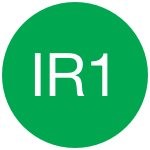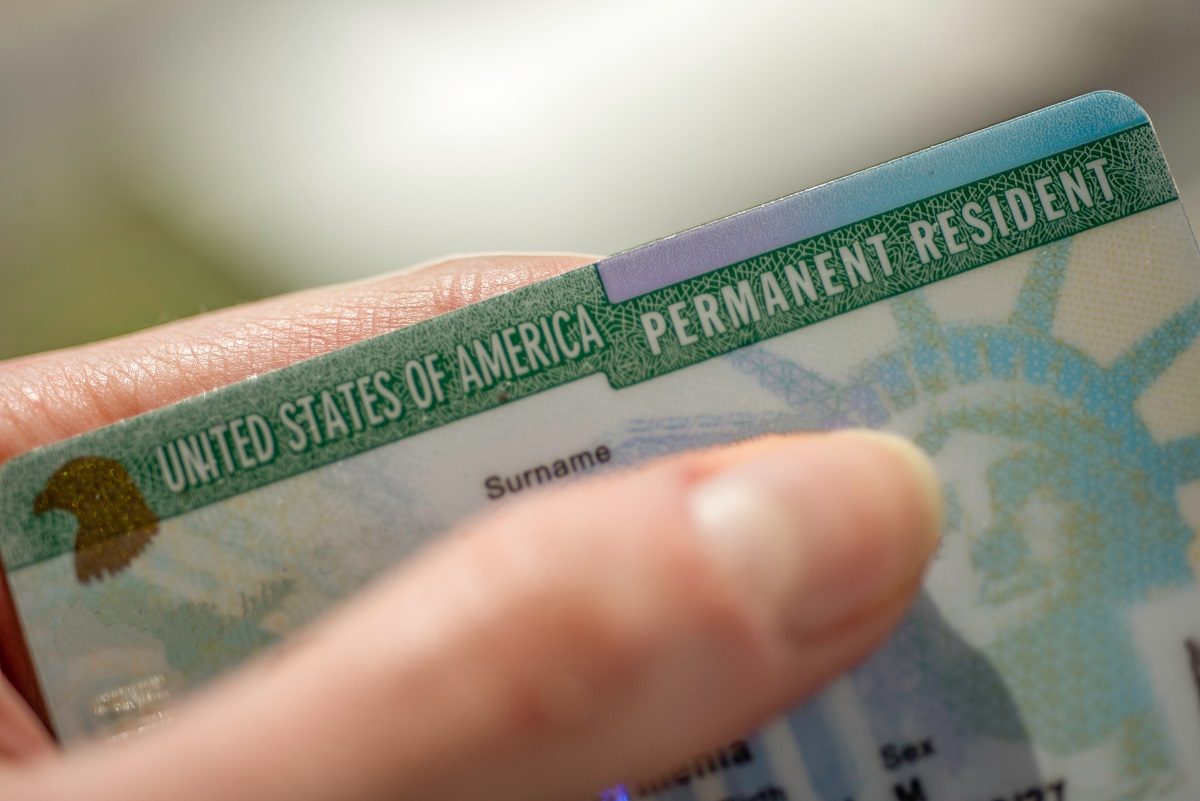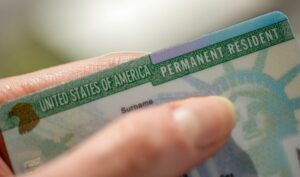
If you previously filed an I-130 petition for your spouse and/or minor children when you were a permanent resident, you can upgrade the petition if you’ve now become a U.S. citizen. For the spouse and/or children of a lawful permanent resident, the wait for an immigrant visa (green card) can be lengthy. After the filing Form I-130, Petition for Alien Relative, spouse and children of a lawful permanent resident may have to wait several months for an immigrant visa to become available. Preference categories have an annual numerical limit. If you upgrade an I-130 petition after naturalization, your petition gets expedited because there is no numerical limit for immediate relatives.
Benefits of Upgrading an I-130 Petition
Sometimes a family member is able to obtain permanent resident status in the United States, but must leave behind a spouse and/or children in the home country. Upon arriving in the U.S. and becoming a permanent resident (green card holder), the relative may petition those family members to immigrate with Form I-130, Petition for Alien Relative. Because relatives of a permanent resident are in the family preference categories, the wait time can take several years. If that permanent resident becomes a U.S. citizen, they may upgrade the I-130 petition and speed up the immigration process.
As a U.S. citizen, your spouse and unmarried children (under age 21) have immigrant visas (green cards) immediately available to them. That’s because there is no numerical limit of immigrant visas available to immediate relatives of U.S. citizens. So even if you already filed a petition for your relative(s), your status as a U.S. citizen will streamline the green card process. Their visa category will be upgraded from family second preference (F2) to immediate relative (IR).
How to Upgrade an I-130 Petition
When you naturalize as a U.S. citizen and have a pending Form I-130 for a relative, USCIS does not automatically upgrade your relative’s priority. You need to actively inform the immigration agencies of your enhanced immigration status.
Generally, it is not necessary to file a new petition or pay another fee. You can simply write a letter to the appropriate immigration agency. However, if you’ve petitioned a spouse with at least one child together on the same petition, you must file new petitions for the children. Skip below to Child’s I-130 Petition.
If your I-130 petition is pending (not yet approved)…
A pending I-130 petition is still being reviewed at the USCIS service center where it was submitted. Therefore, you’ll need to look up the address of the service center that is processing Form I-130. You will need to send proof of your U.S. citizenship. Submit the following documents:
- Proof of U.S. citizenship
Examples of acceptable documents include a copy of the biodata page of your U.S. passport or a copy of your Certificate of Naturalization. - Proof of a pending I-130 petition
Submit a copy of the Form I-797C, Notice of Action (receipt letter) that USCIS mailed to you after filing the I-130 petition.
Mail the evidence with a short cover letter to the USCIS service center on the I-797C, Notice of Action. This is the USCIS office processing your petition. Write "I-130 Upgrade" on the outside on the envelope. If you have additional questions that require support, contact USCIS at 1-800-375-5283.
If your I-130 petition has already been approved…
After USCIS approves the I-130 petition, they forward the case to the National Visa Center (NVC). You’ll need to direct your upgrade request to the NVC. You can do this by sending proof of your U.S. citizenship to the NVC. Please note that it may take approximately 4-6 weeks for the NVC to receive your case after USCIS approves it. The National Visa Center will assign an NVC case number. Scan and submit one of the following documents:
- U.S. Passport
Submit a copy of the biodata page of your U.S. passport. - Certificate of Naturalization
Submit a copy of the Certificate of Naturalization you received after naturalizing as a citizen.
Save the document as a PDF or JPG file. Then, send it as an attachment to the NVC Public Inquiry Form. You'll also need to identify your case with the NVC case number you were provided. Be sure to include "I-130 Upgrade" in the subject line of your inquiry. If you have additional questions that require support, contact the National Visa Center at 1-603-334-0700.
Sample Letter to Upgrade an I-130 Petition
It’s important to include a cover letter when requesting USCIS to upgrade an I-130 petition. The letter can be simple, but it needs to state clearly that you want to upgrade an I-130 petition and a summary of the evidence that’s enclosed.
It’s essential that you include the following pieces of information in your letter:
- Receipt Number: Your receipt number (also called case number) is located within the I-797C Notice of Action that you received after filing the I-130 petition.
- Name of Petitioner: You (the person who filed Form I-130) are the petitioner.
- Name of Beneficiary: Your relative (the person whom you are petitioning) is the beneficiary.
When you mail the letter, don’t forget to include the evidence (e.g. proof of citizenship and receipt notice) as explained in the previous section.
What to Expect After Upgrading the Category
After you upgrade an I-130 petition, your case can move more quickly. As mentioned previously, there is an unlimited number of visas available for the immediate relatives of U.S. citizens. A spouse in the F2A category moves to IR1 (or CR1), and a child in the F2B category moves to IR2 (or CR2).




If your spouse and/or children are currently outside the United States awaiting immigration, the National Visa Center will collect additional documents, invite the beneficiary to submit the online visa application (DS-260) and request Form I-864 (Affidavit of Support) from the petitioner. With these items, the NVC can move forward with scheduling the beneficiary for an interview at the U.S. embassy or consulate.
If your family is already in the United States (and eligible to apply for a green card through adjustment of status), they can file individual Form I-485 applications immediately. In this scenario, the case could be upgraded by filing Form I-485, Application to Adjust Status, with a cover letter, a copy of the petitioner's naturalization certificate and proof of filing or approval of the I-130 petition.
Consequences of Upgrading a Visa Petition
Upgrading an I-130 petition sometimes has consequences. A family preference petition for a spouse permits derivative status for children. (In other words, a child beneficiary may be included on the same petition as the parent beneficiary.) However, immediate relative petitions may not include derivatives. The petitioner must file separate petitions for each child. Even if you prefer to keep your relatives in their old categories, they must immigrate through the new categories.
If you upgrade an I-130 petition for your spouse, and you did not file a separate petition for any children (under age 21) when you were a permanent resident, you must do so now. Immediate relative children must have their own I-130 petitions. This is in contrast to the family second preference (F2) petition, which includes minor children as derivative” of the parent. This can be a confusing element of immigration law. What’s important is that each immediate relative has an I-130 petition filed on their behalf. For this reason, many attorneys who have have permanent resident clients encourage them to file separate petitions for children.

The petitioner's spouse is covered on the initial I-130 petition that was filed. Therefore, the petitioner does not need to file a new petition for the spouse. However, the petitioner must file separate visa petitions for each child, as long as they continue to be unmarried, and under the age of 21 years. This will delay the case slightly, but the approval process will be quick (a few months) given that they are immediate relatives. The spouse and children will be able to immigrate together.
What if you have a child born abroad after you become a U.S. citizen? Your child may be a U.S. citizen at birth. Parents may apply for a Consular Report of Birth Abroad. The consular officer will determine whether your child is a U.S. citizen and can be granted a CRBA that provides proof of citizenship status. If the officer determines your child is not a U.S. citizen, you likely need to file another I-130 petition.
Adjustment of Status Option
If the beneficiary spouse and/or child are presently in the United States, they may be eligible to adjust status to permanent resident status. Adjustment of status is the process of applying for a green card from inside the United States. It is an alternative to consular processing for certain beneficiaries. When the immediate family members entered through a lawful entry, they can typically file Form I-485, Application to Adjust Status, to become green card holders.
Even if you initially anticipated that the immigration would go through consular processing, the path can be switched to adjustment of status. The beneficiaries simply file an adjustment of status application package. Include a short cover letter explaining that the petitioner has become a U.S. citizen and the beneficiary has opted to adjust status instead of applying through a U.S. embassy abroad.
The typical adjustment of status package includes the following forms:
- I-485, Application to Adjust Status
- I-864, Affidavit of Support
- I-693, Report of Medical Examination and Vaccination Record
- I-765, Application for Employment Authorization (optional)
- I-131, Application for Travel Document (optional)
Provided that you have already filed an I-130 petition for the beneficiary, you won't have to file it again. Remember, to include evidence of the petitioner's new status as a U.S. citizen in the adjustment package. Check to see the typical adjustment of status costs and forms for your situation.
About CitizenPath
CitizenPath provides simple, affordable, step-by-step guidance through USCIS immigration applications. Individuals, attorneys and non-profits use the service on desktop or mobile device to prepare immigration forms accurately, avoiding costly delays. CitizenPath allows users to try the service for free and provides a 100% money-back guarantee that USCIS will approve the application or petition. We provide support for the Petition for Alien Relative (Form I-130), Affidavit of Support (Form I-864), and several other immigration services.
Note to Reader: This post was originally published on May 1, 2018, and has been modified with improvements.
Want more immigration tips and how-to information for your family?
Sign up for CitizenPath’s FREE immigration newsletter and
SAVE 10%
on our immigration services





